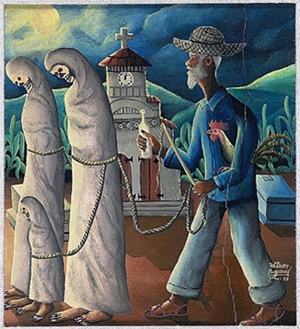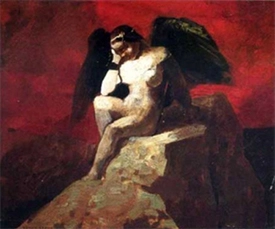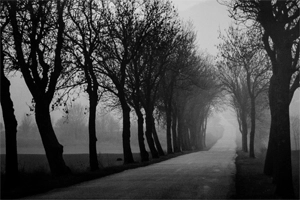ARAS Connections: Image and Archetype - 2015 Issue 2

Over the past three years, ARAS has been forming a vision for our future. After the successful launching of ARAS Online and the publication of the world-wide bestselling The Book of Symbols, we began asking ourselves “What next?” How will we grow ARAS in the future and present it to a world wide audience while maintaining our core commitment to the development of an archive and institution that explores symbolic imagery from all cultures and all eras? Cultural and archetypal commentary distinguishes ARAS from other online sources of images that flood the internet without any context for understanding and perspective. In depth context of symbolic imagery with cross-cultural connections is at the heart of our mission. Some years ago, I heard that the future of internet content would be “curated content”—content that has been carefully edited, selected, and vetted. ARAS has been in the forefront of “curated content” and will remain one of the few sites that actually lives up to that standard.
We came up with two primary areas for the focus of our vision for the future: “Growing the Archive Itself” and “Growing ARAS in the World”. In this Welcome I want to report on the creation of the ARAS International Advisory Board which represents a significant step in our effort to fulfill that part of our vision focused on “Growing ARAS in the World”. After the core of ARAS came to the United States from original presentations of art exhibits created to illustrate analytical psychology and its relation to other disciplines at the Eranos Lectures in Ascona Switzerland in the 1930’s, most of its research and development was centered in the United States. ARAS continued to explore symbolic imagery from mythology, religion, art history, archaeology and other sources from around the world, but was now fundamentally a US enterprise. The creation of the world wide Internet changed our reach and potential enormously. We were relatively early in the creation of ARAS Online at the turn of this century and we are now in a position to further develop our reach by engaging world wide scholars in our effort. With that in mind, we have created an International Advisory Board with the purpose of bringing new material to us from around the world and in helping us better relate to and reach out to a world made both smaller and larger by the reach of the Internet. Here are the first members of our newly created International Advisory Board whom we welcome and thank for joining with us in “Growing ARAS in the World.”
Australia: Craig San Roque
Brazil: Andrea Fiuza Hunt
China: Heyong Shen
Denmark: Aksel Haaning
France: Christian Gaillard
Great Britian: Jules Cashford
India: Kusum Dhar Prabhu
Israel: Janice Shapiro
Peru: Patricia Llosa
United States: John Beebe
Taiwan: Shiuya Sara Liuh
Venezuela: Axel Capriles
Zombies: A Brief Natural History

Lee Weiser takes us by the hand in an exploration of a symbolic image that has seized popular imaginations from around the world for a long time. The newest zombie craze is only the latest in a long standing preoccupation with the archetypal notion of the living dead. The living dead are alive and well in the collective psyche of our times. I first heard this presentation at an International Association of Jungian Scholars conference in Phoenix. Lee Weiser presented with humor and fascination her study of this phenomenon and I was gripped by how alive and timely her presentation was. As students of archetypal, symbolic imagery, every aspect of the human psyche is a potential source of unexpected discovery and vitality, including that which we might think of as “camp” or “low brow”. Clearly, zombies are “low brow”, not “high brow”—in fact they are reduced to primitive drives and instincts without the capacity for higher thought other than
how to perpetuate and increase their own. At times, that sounds like the human species itself. This paper offers us the opportunity to explore the zombie phenomenon as an archetype.
-Tom Singer
Books, newspapers, TV, websites, radio shows, social networks, and the Center for Disease Control have now managed to alert the entire country to the threat of a possible zombie apocalypse. Instead of creating mass panic, reports of the walking dead have evolved into immeasurably popular sources of entertainment and zombies themselves have displayed an amazing versatility as metaphors for such diverse elements as the evils of racism, consumerism, conformity, and vivisection; the Viet Nam war; social apathy; loss of individuality and identity; fascism; industrial dystopia, ecological disasters; immigration, diseases, plagues, and pandemics; spiritual bankruptcy; and the TEOTWAWKI (what “preppers” call “the end of the world as we know it”). Something about these moaning, brain-dead beings who move in swarms but don’t move right, act right, talk right, eat right, or behave right has captured the collective cultural imagination and generated endless speculation about their condition and the condition of the world in which they lumber.
It might seem at first glance that these popular but unrealistic rotting roamers are just a recent product of postmodern subtexts, but a longer look unearths the fact that written accounts of reanimated corpses have been turning up since people first pushed wedge shapes into clay tablets. When the Sumerian goddess, Ishtar, didn't get her way, she threw an epic fit of anger and threatened to release the dead from the Netherworld to consume the living (ca. 911-612 B.C.E.). The Hebrew prophet, Ezekiel, stood by as a witness while his Sovereign Lord raised an entire army from dry bones that had been lying scattered in a valley (Ezekiel, 31, 1-14). From Osiris to Dionysus, Balder to Quetzalcoatl, mythology from around the world is rife with the motif of dying gods and goddesses who come back to life.
Read Zombies: A Brief Natural History in its entirety.
Wrestling with Azazel--Jung and Modern Art, A Critical Appraisal

A version of this paper was originally presented at the Art and Psyche in the City 2012 conference sponsored by ARAS.
During the years, a constant stream of artists have been coming to ARAS to do research or simply to be inspired. This is one of the many expressions of how Jung and his theories of archetypal imagery have attracted artists and continue to do so. The enthusiastic reception of The Red Book by artists shows another example of Jung's influence. As this article points out, it may seem perplexing to look at Jung’s own struggle with modern art where his concern about artists is that they are becoming disconnected from spiritual roots and inflated in their cultural consciousness. Jung is upset that modern artists portray chaos, ugliness and fragmentation rather than images that would bring wholeness. This seminal article suggests that Jung does not recognize that the unintelligibility itself in modern art points to the symbol as the best expression of something that is not yet known or understood. Instead, modern art is seen by Jung as an aimless, fragmented undertaking and he emphatically, even dogmatically distinguished the efforts of modern artists from depth analysis. However, artists’ continuing fascination with Jung may show them in the end to be fellow wrestlers with inner daimons attempting on their own, without prior models, to truly enter the unconscious to bring back symbols of transformation.
-Ami Ronnberg
In placid hours well-pleased we dream
Of many a brave unbodied scheme.
But form to lend, pulsed life create,
What unlike things must meet and mate:
A flame to melt—a wind to freeze;
Sad patience—joyous energies;
Humility—yet pride and scorn;
Instinct and study; love and hate;
Audacity—reverence. These must mate,
And fuse with Jacob’s mystic heart,
To wrestle with the angel—Art.
Herman Melville
“I am only prejudiced against all forms of modern art. It is mostly morbid and evil.” (C.G. Jung Letters volume 1, Letter to Esther Harding 7/8/47, p. 469.)
Ever since I read this statement I was perplexed by Jung’s vehemence. Writing two years after the catastrophe of WWII, with the understanding of evil as an autonomous substance (and not just a privatio boni), Jung piles morbidity and evil on modern art. Why such an intense reaction? This paper is my attempt at imagining an answer.
The above quote is by no means isolated. Jung found morbidity in James Joyce’s Ulysses, stating that “even a layman would have no difficulty in tracing analogies between [it] and the schizophrenic mentality.” (CW15, p. 116) He considered art of Pablo Picasso as belonging to the type of schizophrenic art. (CW15, p. 137)
Read Wrestling with Azazel--Jung and Modern Art, A Critical Appraisal in its entirety.
The Poetry Portal

Dear Friends, Fellow Writers, and Poets,
A heartfelt thank you to everyone who submitted a poem for the last “Invite to Write”, inspired by the image of “Circus,” which you can read here. I continue to be moved to places of wonder and delight with your submissions.
This time we publish a poem along with this wonderful painting that served as its inspiration in true Ekphrasis tradition. It was written by Eldon Beck and the title of his poem also gave the name for the theme of this edition, “Unknown Road to Somewhere”. I hope you will feel as excited as we are and send your new poems inspired by this image to poetry@aras.org by August 15, 2015.
Unknown Road to Somewhere
Who can break from the mist and travel
through nature with me...
Joseph Stroud
Lure of the unknown compels I travel the road
that rises then dips into the void of a foggy nowhere
Frosted pastures wait for sharp plows, locust trees
in black bareness edge the lane, thin branches arch,
a twiggy gateway to hazy mysteries. Here I lean
into the breeze, caress gnarled bark, hear blackbirds
chatter in the hornbeam hedgerows. But the lonely
road entices, this gateway demands I discard
contentment and dive into the stew where edges
vanish, pride debates humility, sorrow weaves
her tapestry frayed by torn threads
-Eldon Beck
Contents
Become a Member of ARAS!
Become a member of ARAS Online and you'll receive free, unlimited use of the entire archive of 17,000 images and 20,000 pages of commentary any time you wish—at home, in your office, or wherever you take your computer.
The entire contents of three magnificent ARAS books: An Encyclopedia of Archetypal Symbolism, The Body and The Book of Symbols are included in the archive. These books cost $330 when purchased on their own.
You can join ARAS Online instantly and search the archive immediately. If you have questions, please call (212) 697-3480 or email info@aras.org
We Value Your Ideas
As our newsletter grows to cover both the ARAS archive and the broad world of art and psyche, we're eager to have your suggestions and thoughts on how to improve it. Please send your comments to info@aras.org. We look forward to your input and will reply to every message.
Subscribe
If you're not already a subscriber and would like to receive subsequent issues of this newsletter by email at no cost, e-mail us at newsletter@aras.org.
